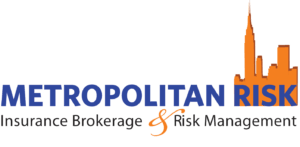New York State (NYS) has once again increased its protections against workplace discrimination and harassment by updating and expanding its Anti-discrimination laws. Under a new law enacted on Aug. 12, 2019, certain provisions that were added by the state’s 2019 budget in 2018 are expanded so that they cover not only sexual harassment but also all other types of unlawful employment discrimination. New employee notice requirements apply as well.
The new law also makes all employers in the state (not just those with four or more employees) subject to all provisions of the NYS Human Rights Law (HRL) starting on Feb. 8, 2020. A variety of other changes will make it easier for individuals to hold employers liable for harassment and discrimination.

Action Steps For Employers
Employers in NYS should become familiar with the new law and begin providing written copies of their sexual harassment prevention policies and training program information in English and each of their employees’ primary languages. Employers should also monitor the NYS Department of Labor’s (DOL) website for model foreign-language notices.
Identifying Unlawful Workplace Harassment
The new law expands the NYS HRL’s current definition of unlawful workplace harassment effective Oct. 11, 2019. Specifically, harassment will be considered an unlawful discriminatory practice when it subjects an individual to inferior terms, conditions or privileges of employment because of the individual’s opposition to or participation in any proceeding involving unlawful workplace harassment or because of the individual’s membership in one or more of the following protected categories:
- Age
- Creed
- National origin
- Gender identity/expression
- Sex
- Predisposing genetic characteristics
- Marital status
- Race
- Color
- Sexual orientation
- Military status
- Disability
- Familial status
- Domestic violence victim status
Changes to Recently Added Provisions on Workplace Sexual Harassment
| Topic | Effective | Law Changes |
| Written policy on sexual harassment prevention | Oct. 9, 2018 | Employers must have a written sexual harassment prevention policy and distribute it to employees. |
| Aug. 12, 2019 | Employers must provide the above policy in English and each employee’s primary language and both at hire and again every year when training is provided. | |
| Training programs on sexual harassment prevention | Oct. 9, 2018 | Employers must provide annual, interactive sexual harassment training to all employees. |
| Aug. 12, 2019 | Employers must provide written copies of the training program information in both English and each employee’s primary language and both at hire and again every year. | |
| Nonemployee claims | April 12, 2018 | Nonemployees may file workplace sexual harassment claims against an employer. |
| Oct. 11, 2019 | Nonemployees may file any type of unlawful workplace discrimination claim against an employer. | |
| Contractual arbitration requirements | July 11, 2018 | Employers are prohibited from including mandatory arbitration requirements for sexual harassment claims within any written contract. |
| Oct. 11, 2019 | The above prohibition applies for any type of unlawful workplace discrimination claim. | |
| Nondisclosure conditions in claim settlements | July 11, 2018 | Employers are prohibited from including nondisclosure conditions in any agreement to resolve a sexual harassment claim, unless the complainant prefers to include one. |
| Jan. 1, 2020 | The above prohibition applies to agreements to resolve any type of unlawful workplace discrimination claim. Also:
Any agreement that prevents disclosure of facts related to a future discrimination claim must include notice that it does not prohibit the employee or applicant from speaking with law enforcement, the U.S. Equal Employment Opportunity Commission (EEOC), the NYS Department of Human Services (DHS), any local commission on human rights or an attorney. |
For more information contact one of our Risk Advisors or call 914-357-8444.

 Photo by Brooke Cagle on Unsplash
Photo by Brooke Cagle on Unsplash



 Photo by Markus Spiske on Unsplash
Photo by Markus Spiske on Unsplash 
 Photo by kate.sade on Unsplash
Photo by kate.sade on Unsplash